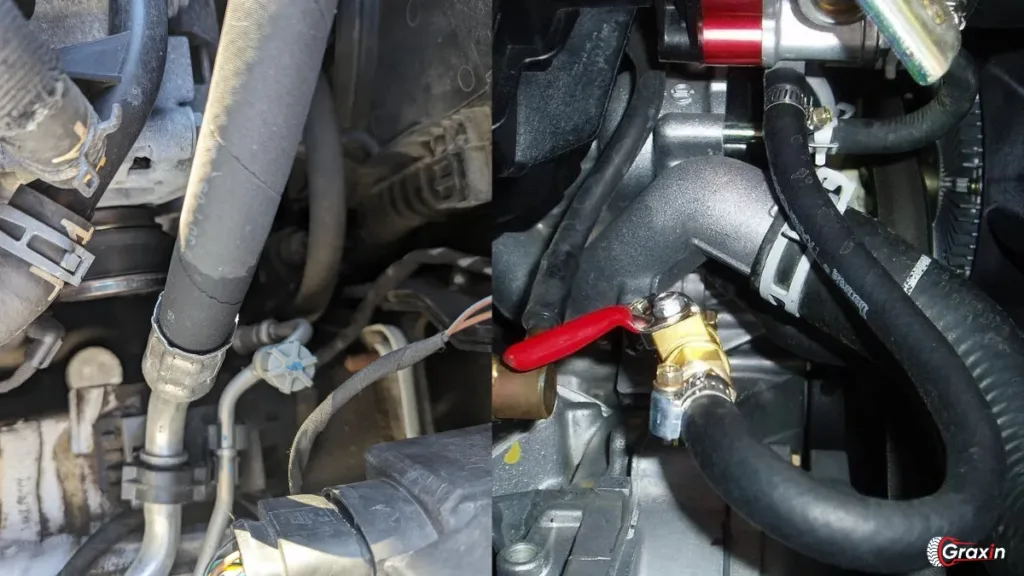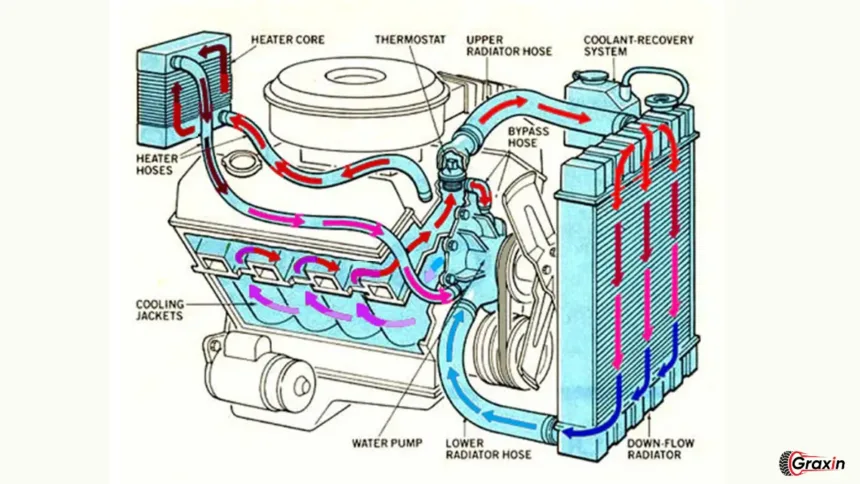When it comes to vehicle maintenance, most car enthusiasts focus on the flashy parts like the engine, transmission, or even the tires. However, tucked away under the hood is an unsung hero the coolant bypass valve. This little component plays a pivotal role in ensuring your engine operates efficiently and maintains optimal temperatures. In this article, we’ll delve deep into what a coolant bypass valve is, its functions, maintenance, and some real-life scenarios to keep your vehicle running smoothly.
What is a Coolant Bypass Valve?
The coolant bypass valve is a crucial component of a vehicle’s cooling system. To understand its role, we first need to grasp the basics of how an automotive cooling system functions. Essentially, this system is responsible for regulating the temperature of the engine to prevent overheating. The bypass valve acts as a sort of traffic director for the coolant, ensuring it flows where it’s needed most.
How It Works
In a standard cooling system, the coolant circulates through the engine and radiator, absorbing heat from the engine and dissipating it through the radiator. The coolant bypass valve is designed to control the flow of coolant to the engine and bypass it during specific conditions, particularly when the engine is cold.
- Cold Start: When you start your vehicle, the engine is cold. The bypass valve opens to allow coolant to circulate within the engine without passing through the radiator. This rapid circulation helps the engine warm up quickly.
- Normal Operation: Once the engine reaches its optimal operating temperature, the bypass valve closes. This redirects the coolant to flow through the radiator, where it cools down before re-entering the engine.
Importance of the Bypass Valve
You might be wondering, “Isn’t it just another small part?” Well, not quite! The coolant bypass valve serves several critical functions:
- Engine Efficiency: By allowing the engine to warm up quickly, the bypass valve enhances fuel efficiency. A warm engine burns fuel more effectively than a cold one.
- Temperature Regulation: It maintains the engine temperature within a safe range, preventing overheating and potential engine damage.
- Longevity of Engine Components: By ensuring consistent temperature regulation, the bypass valve helps prolong the life of various engine components, reducing wear and tear.
Types of Coolant Bypass Valves
Not all coolant bypass valves are created equal. There are primarily two types:
Mechanical Bypass Valves
These valves operate based on mechanical principles. They use a spring mechanism that opens or closes based on the engine’s temperature. When the engine is cold, the spring holds the valve open, allowing coolant to bypass the radiator.
Electronic Bypass Valves
With advancements in automotive technology, electronic bypass valves have become more common. These valves use electronic sensors to monitor engine temperature and adjust the coolant flow accordingly. They offer improved precision and responsiveness compared to their mechanical counterparts.
Signs of a Failing Coolant Bypass Valve

Just like any other component in your vehicle, the coolant bypass valve can wear out or fail. Here are some warning signs to watch for:
- Overheating Engine: If your engine frequently overheats, the bypass valve may be stuck closed, preventing coolant from circulating effectively.
- Coolant Leaks: A failing valve can lead to coolant leaks, which can be identified by puddles under your vehicle.
- Erratic Temperature Gauge: If your temperature gauge fluctuates wildly, it might indicate that the bypass valve isn’t functioning properly.
- Poor Fuel Economy: If you notice a sudden drop in fuel efficiency, it might be time to check the coolant bypass valve, as it could be impacting engine performance.
Maintenance Tips for the Coolant Bypass Valve
Keeping your coolant bypass valve in good condition is essential for the overall health of your engine. Here are some maintenance tips to ensure longevity and functionality:
Regular Inspections
Make it a habit to inspect your coolant system regularly, especially before long trips. Check for leaks, signs of corrosion, or any physical damage to the bypass valve.
Coolant Changes
Old coolant can lead to sludge build-up, which can affect the bypass valve’s operation. Follow your vehicle’s recommended schedule for coolant changes, usually every 30,000 to 50,000 miles.
Flush the Cooling System
Consider flushing the entire cooling system every few years. This process removes debris and contaminants, ensuring the bypass valve and other components operate smoothly.
Listen for Unusual Noises
Keep an ear out for any unusual sounds coming from the engine bay. Gurgling or hissing noises may indicate a problem with the coolant system, including the bypass valve.
Real-Life Examples of Coolant Bypass Valve Issues
Understanding the importance of the coolant bypass valve is one thing, but hearing real-life examples can drive the point home.
Example 1: The Overheating Disaster
Imagine you’re on a road trip, cruising down the highway, and suddenly, your engine temperature gauge starts climbing into the red zone. Panic sets in as you pull over, only to discover that the coolant bypass valve was stuck closed, preventing coolant from circulating through the engine. A simple inspection and replacement could have saved the day and your engine!
Example 2: The Costly Repair
In another scenario, a driver neglected regular coolant changes. Over time, the old coolant turned into sludge, leading to a clogged coolant bypass valve. The result? A hefty repair bill to replace not just the valve, but also other damaged components that had been affected by the overheating.
Conclusion
The coolant bypass valve may seem like a small part of a much larger system, but its impact on your vehicle’s performance and longevity cannot be overstated. From regulating temperature to improving fuel efficiency, this unsung hero works tirelessly behind the scenes. Regular maintenance and prompt attention to any warning signs can ensure your vehicle remains in top shape for years to come.
In short, don’t overlook this little valve give it the attention it deserves! After all, a happy engine means a happy driver.
FAQs
1. What does a coolant bypass valve do?
The coolant bypass valve controls the flow of coolant in the engine cooling system, allowing coolant to circulate quickly when the engine is cold and redirecting it through the radiator when the engine is warm.
2. How do I know if my coolant bypass valve is failing?
Signs of a failing bypass valve include engine overheating, coolant leaks, erratic temperature gauge readings, and decreased fuel economy.
3. Can I drive my car with a bad coolant bypass valve?
It’s not advisable to drive with a malfunctioning bypass valve, as it can lead to severe engine overheating and damage.
4. How often should I check my coolant system?
It’s best to inspect your coolant system regularly, especially before long trips. Additionally, follow your vehicle’s maintenance schedule for coolant changes.
5. What should I do if my engine overheats?
If your engine overheats, pull over immediately. Allow it to cool down, then check the coolant levels and inspect for any visible issues, including the bypass valve. If unsure, consult a mechanic.
Also Read: Everything You Need to Know About Tow Hooks







